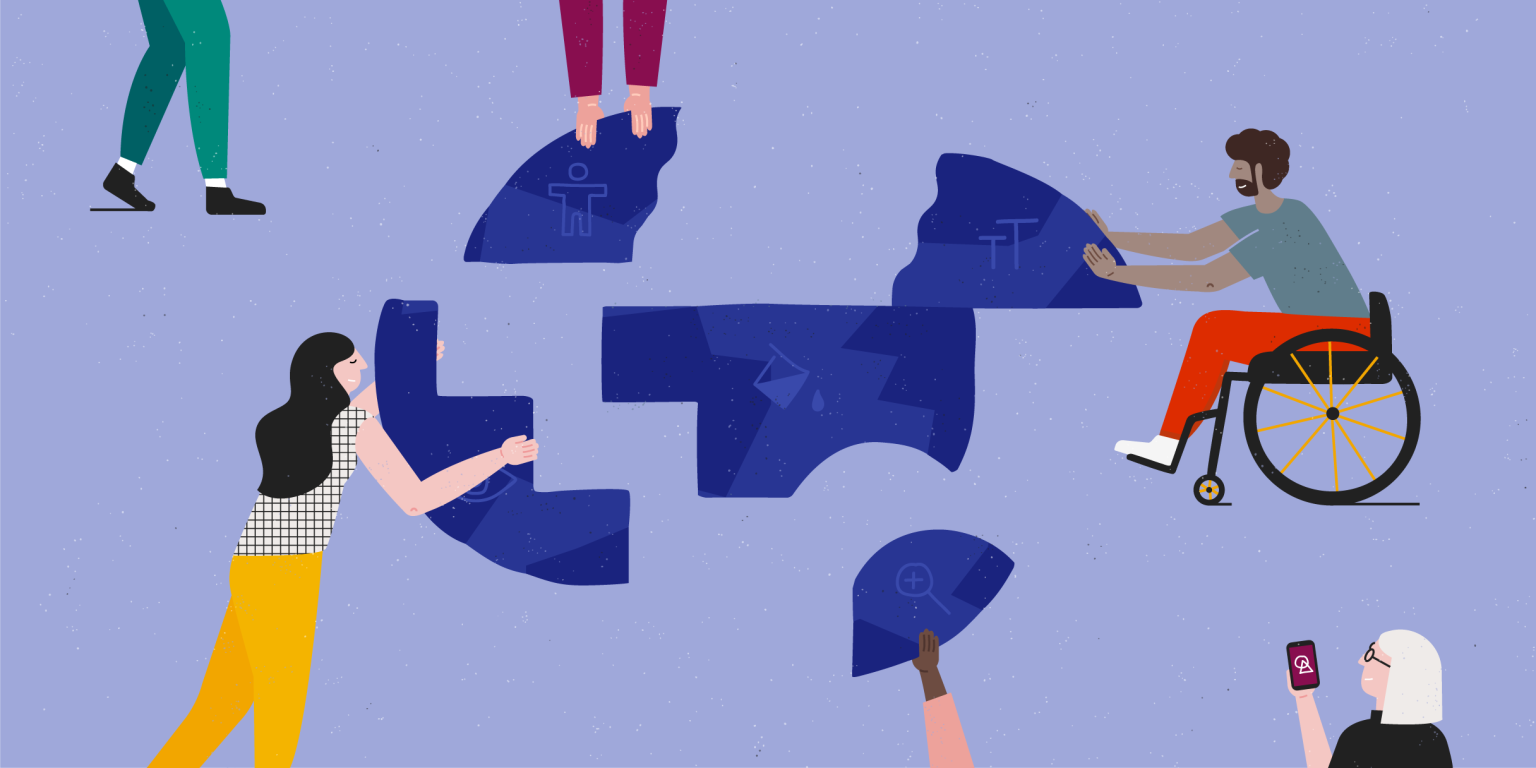Richard Boggie shares his top digital accessibility tips.
Okay, I know that people and organisations don’t deliberately set out to exclude disabled people from their digital content and services. Why would you? It would be illegal, bad for business and reputationally damaging.
But I also know from my own experience that barriers exist online for people like me. And if you choose not to remove those barriers then that’s an active choice to continue excluding and discriminating.
So, here are my five top tips for taking action so that your disabled customers, service users and staff can access your digital stuff and feel included and valued.
Build Skills
The tools, guidelines and resources are out there, and many of them are free! The problem is that not enough people know how important they are, or how to use them. Being digitally inclusive is a habit and it needs a bit of up-front investment in staff awareness and skills.
There is no shortage of experts out there who can facilitate training for you – at Difference, we offer two workshops, but there are plenty of others to choose from, including AbilityNet and EnhanceTheUK.
Make it Matter
We all have a part to play in making our online services accessible, but too often it seems like it’s something that is not being managed. If you discovered that the main doors to your building were regularly left locked so that customers couldn’t get in, someone would get it in the neck. But businesses seem happy to let the digital equivalent happen on a daily basis.
If it ain’t managed, it won’t happen, so,
- Establish clear accountabilities and standards of performance.
- Monitor and measure against these standards.
- Build it into manager’s targets.
- Have regular audits.
- Get it on the agenda of your Exec team.
Involve Users
No matter how well you train your people, you will still need to engage the real experts to help you get it right. Most disabled people are only too glad to help if they think it’s going to help to improve a service. And because we use digital services and assistive technologies every day, we can very quickly tell you what works and what doesn’t.
Many organisations will have a disabled staff network who might be willing to contribute. Or, if you know who your disabled customers are, you could ask them to help. Or you can get professional help from consultants.
Remember that, while most of us are willing to offer help, we also don’t like being taken for granted – doing this properly means time and effort, which should be properly compensated.
Use Built-in Checkers
One of the amazing advances over the past few years has been the development of accessibility checkers that are now built into systems like MS Office. We just need to take some time to work out how to use them (training) and build them into our good habits.
The last thing I will do with this blog after writing it is to run Word’s accessibility checker on it – it’s super easy and will point out any issues and even help me fix them. Ta-da!
Build in Accessibility From the Start
Whenever you start to think about redesigning a process, building a new system or creating a new website, make accessibility one of the projects strategic priorities and be prepared to dig your heels in. Don’t let suppliers fob you off with vague reassurances about accessibility. It’s a whole lot harder to fix later if you buy or commission a poorly designed service. We’re all used to asking for Equality and Diversity policies from suppliers, but we need to insist on them providing solutions that go further and meet people’s needs.
Visit the Difference website for more information about digital accessibility workshops.



